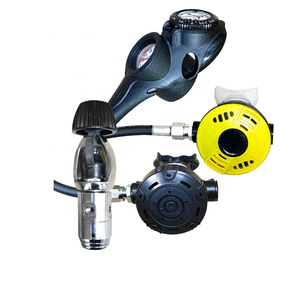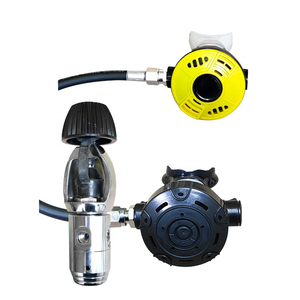
All categories
Featured selections
Trade Assurance
Buyer Central
Help Center
Get the app
Become a supplier

(5028 products available)













































Underwater jets, or diver propulsion vehicles (DPVs), have significantly changed how people dive. These devices, powered by electric motors or propellers, propel divers through the water, allowing them to cover considerable distances and conserve energy. DPVs enable divers to explore more extensive areas, reach greater depths, and experience longer dives. They have revolutionized underwater exploration, scientific research, and underwater photography, making it easier for divers to navigate currents and explore aquatic environments with reduced physical effort. Underwater jet packs have opened up new possibilities and enhanced the diving experience for enthusiasts and professionals alike.
The speed of a diver propulsion vehicle (DPV) jet can differ depending on the model and specific design. Most DPVs and underwater jet skis have different speed settings, allowing divers to adjust their velocity based on their needs and comfort level. On average, DPVs can reach speeds ranging from 2 to 5 miles per hour (3 to 8 kilometers per hour). However, some high-performance DPVs can achieve up to 8 to 10 miles per hour (13 to 16 kilometers per hour). The speed of a DPV is influenced by factors such as battery power, water conditions, the diver's body position, and the weight carried by the diver.
There are several types of jet ski submarines. Impeller Jets are the most common jet type and use a spinning impeller to create a water jet that propels the object or person. Thruster jets use multiple nozzles to create a directional water jet that can move objects in any direction. Water ram jets use the pressure of the water to create a high-velocity jet that can propel an object at high speeds. Propulsion jets use a propeller to create a water jet that propels the object or person through the water. Each type of jet has advantages and disadvantages, and the choice of jet depends on the intended use and the application's specific requirements.
The lifespan of a diver propulsion vehicle (DPV) or hot tub with underwater jets can vary depending on several factors, including the brand, model, usage, maintenance, and care. If properly maintained and with regular servicing, a well-maintained DPV can last for several years. However, it's important to note that specific components of the DPV, such as batteries and motors, may require replacement or repair over time. Regular cleaning, proper storage, and following manufacturer guidelines for maintenance can help prolong the lifespan of a DPV. In the case of a hot tub, one must ensure proper maintenance and care. Regular cleaning is crucial to prevent clogs and blockages. The jets should be regularly inspected for any signs of damage or wear, such as cracks or loose fittings, and issues should be addressed promptly. An expert should use a suitable lubricant on the jet's moving parts to prevent friction and ensure smooth operation. It is essential to remember that all manufacturer guidelines should be followed for water chemistry and balance to prevent corrosion and damage to the jet. Lastly, proper winterization is essential to protect the jet during colder months. By following these steps, one can extend the lifespan of their underwater hot tub jet and enjoy its soothing benefits for years to come.